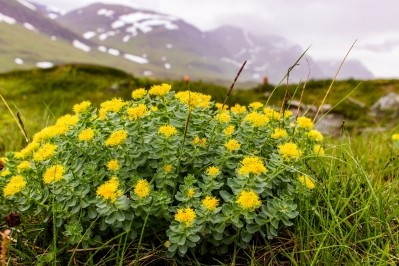ABC article paints grim picture of climate change effects on plants and how it's changed in past decade

The article is the lead piece in the winter edition of HerbalGram, ABCs’ periodical publication. The first time the organization visited the topic is was 2009. In the intervening years, ‘global warming’ became ‘climate change.’ And now it’s widely being referred to as a climate crisis.
ABC founder and executive director Mark Blumenthal said focusing on the sustainability of the supplies of medicinal plants is something baked into his organization’s DNA.
“In HerbalGram No. 2, back when it was still a newsletter in 1983, we published an article about endangered wild orchids and whey they shouldn’t be traded in the herbal trade. The common name is lady slipper, and it was at that time a not uncommon ingredient in relaxation formulas,” Blumenthal told NutraIngredients-USA.
“Now we have gone from the need for conservation of a North American wild orchid to HerbalGram No. 124, 36 years later, where we are taking a global view,” he said.
Titled “Plants in Peril/Climate Crisis Threatens Medicial and Aromatic Plants,” the authors took a detailed look at how the crisis may be affecting populations and ultimately supplies of these plants.
The authors, Hannah Baumann, Tyler Smith and Connor Yearsley, talked to some of the experts quoted in the 2009 article to get a first hand at how things had changed. The experts are more or less in agreement that medicinal and aromatic plants (or MAPs as they are referred to in the article) will face significant or even existential threats in the years ahead.
The warming is unprecedented in its speed
The article noted that at the present predicted rate of warming, the Earth is headed toward a hotter climate not seen since at least 30 millions years ago. While many plant species have adapted to the long cooling trend, human activities, most notably the massive release of the potent greenhouse gas CO2 into the atmosphere, threatens to reverse all that cooling in as little as 200 years.
The issue for plants, then, is that their local environments are expected to change faster than they can adapt, either by altering their biochemistry or growing habits, or by migrating altogether.
For example, in some Amazon rainforest areas in the foothills of the Andes in Peru, tree species have been observed to migrate uphill. But the data indicates most trees can’t move upward fast enough to avoid species loss. Similarly, in research plots in the lowlands, higher temperatures and increased drought saw a change in the species makeup, with a trend toward decreased biodiversity.
In addition to the rainforest situation, the article looks in depth at what’s happening in some of the environments where plants are already living on the ragged edge, such as alpine areas or sea level tundra in the Arctic. These areas, even though they form only a small percentage of the Earth’s total land area, are the source of many widely used MAPs, including Rhodiola (Rhodiola rosea). They are also the parts of the globe that are experiencing the most rapid warming.
Issues in the Arctic
One of the experts quoted in the 2009 article, Alain Cuerrier, PhD, of the University of Montreal, said that coastal erosion has become a big issue in decade since 2009. Sea level rise is partly to blame, as is the loss of sea ice. And the permafrost, which helps to stabilize fragile and/or waterlogged tundra soils, has been melting in many areas.
Rhodiola stands have been washed away, Cuerrier said. And many of the MAPs in the region are vulnerable to flooding and erosion from melting glaciers and snowfields, which in years past released less of their water load and did it more gradually.
In Alpine areas, the article says researchers have observed more new plant species moving in and potentially outcompeting the endemic plants. And this changing biome could affect the supply of cordyceps, an extremely popular fungal ingredient that grows as parasite on the larvae of a number of moth species in high altitude areas in the Himalayas. The article noted that climate change in these regions could be exacerbating the already intense harvesting pressure (the ingredient sells for two or three times the price of gold, depending on what source you use).
Interconnected industry
Blumenthal said the important thing to take away is the whole world is interconnected, and the herbal business is, too.
“ABC has taken a role in communicating to the herbal industry in the United States and beyond about the need for understanding appropriate conservation issues. So now we are talking about the very survival of these plants,” Blumenthal said. “I think everybody in the industry should be reading this issue. It relates to almost everyone no matter the level of interest they have commercially.”
















